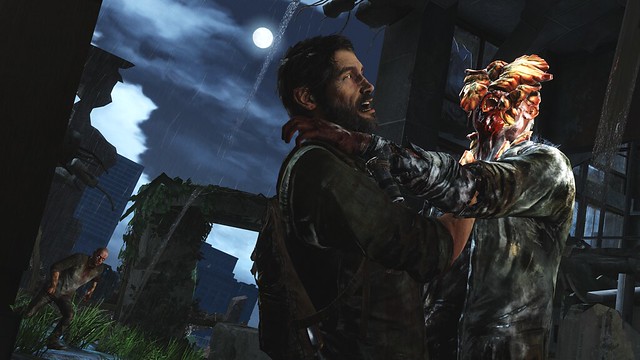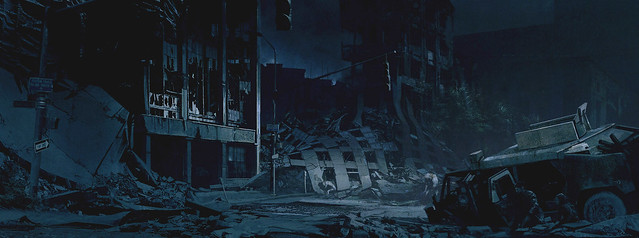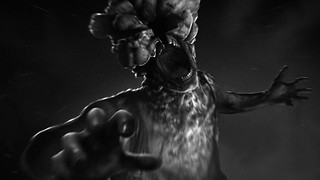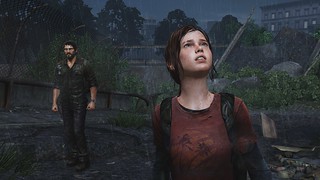
I’ve finally played a chapter from Naughty Dog’s eagerly awaited post-pandemic survival tale, and the first thing I want to say is this: The Last of Us is not a shooter. Well, not exactly. Though Joel packs a pistol, you’ll count yourself lucky to be holding more than 10 bullets at any one time. Most times you’ll want to avoid fights by sneaking and hiding. In other, more desperate times you’ll pull the trigger with a feeling of great reluctance — all the while praying that you don’t miss. The ultra-tight ammo supply imbues the game with a primal, high-stakes tension that brings uncertainty to every decision you make. One thing’s for sure: this is one mess you won’t be able to shoot your way out of.
“The Last of Us is not a shooter.”As I guided Joel’s group around the dilapidated fringes of post-pandemic Boston, I saw constant reminders of Naughty Dog’s legendary attention to detail. Step under a trickle of water and Joel will raise his hand to keep his head dry; knock an enemy near a wall and Joel will pin him there to deliver a staggering punch. The environments also bristle with detail. Peer through a derelict car’s filthy window and you’ll see an interior modeled down to the steering wheel and gearshift knob. Shine a flashlight in a dark room and you’ll project your companions’ shadows softly and realistically against the wall and floor. Peek around a corner and you might spy a mouldering poster for “Fever Dream,” one of several fictional movie references dotted throughout the world.


With Tess and Ellie taking up the rear, I quietly entered a sagging skyscraper, my exploration accompanied by the ominous groans of tortured steel and a series of unsettling chirps. That’s when I spotted my first Clicker, a late-stage infected human with obscene fungal growths sprouting from its eye sockets. The Clicker is one of the deadliest enemies you’ll face, but it’s functionally blind, relying on a form of echolocation to navigate and hunt its prey. I hurled a glass bottle to distract the monster, then quietly guided Ellie and Tess further into the building, scooping up ammo and supplies along the way.
“Crafting is a necessity, not an optional sidequest.”You’ll quickly learn that crafting is a necessity, not an optional sidequest. As you collect spare parts in order to craft gear and weapons, you’ll face tough choices on where to allocate scarce resources. Use a rag now to make a much-needed medkit, or save it for a molotov cocktail — just in case? You can also combine blades and bindings with improvised weapons (pipes, two-by-fours) to craft a powerful anti-crowd weapon. Or you can opt to make a short-range shiv that can instantly and silently dispatch one enemy. Whichever you choose, the game’s crafting interface provides a wealth of information in a lightweight and accessible UI. Despite the range of options I was able to find and craft anything I needed quickly and efficiently.



Based on the chapter I played, Naughty Dog doesn’t seem to be leaning on jump scares, fakeouts, or cheap tricks to gin up fear. Instead, The Last of Us develops a deeper, more oppressive dread by surrounding you with palpable decay and loneliness, turning off the lights and bombarding you with amygdalae-melting audio effects. Creeping through the filth-streaked corridors scrounging for scissors and tape didn’t make me feel like an all-powerful supersoldier, only a desperate survivor fighting to draw another breath. That bleakness permeates and propels the gameplay: No matter how bad it gets, you’re always worried that it’s about to get much, much worse.
Visually, the game is a knockout. The intensely detailed interior nooks and crannies contrast vividly with the massive scale of the outdoor scenes, such as the vine-choked skyscrapers of an abandoned Boston. The control scheme felt natural and intuitive, and Ellie and Tess felt less like advanced NPCs with great A.I. and more like companions on a dark, desolate journey.
And those were my experiences with The Last of Us! Have any questions? Let me know in the comments and I’ll answer any questions I can.
